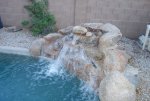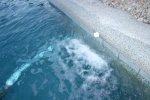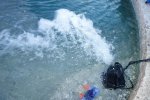- Aug 5, 2013
- 219
- Pool Size
- 12000
- Surface
- Plaster
- Chlorine
- Salt Water Generator
- SWG Type
- Pentair Intellichlor IC-40
I am currently lowering my TA and have always wondered what was the best method as there are many ways.
My three contenders:
Waterfall:

Side pool aerator fitting:

Submersible pump on step:

PS: I understand there is some variability in a question such as this. I understand power consumption is going to depend on motor size and all methods are going to depend on how they are returned to the pool (e.g. the submersible pump may be better if the spray went more horizontal and churned the surface of the water versus it being shot straight up out of the water). So I'm not asking for absolutes here, just a friendly guess.
- What do you think the best method would be in terms of speed?
- What do you think the best method in terms of power consumption vs efficiency?
My three contenders:
Waterfall:

Side pool aerator fitting:

Submersible pump on step:

PS: I understand there is some variability in a question such as this. I understand power consumption is going to depend on motor size and all methods are going to depend on how they are returned to the pool (e.g. the submersible pump may be better if the spray went more horizontal and churned the surface of the water versus it being shot straight up out of the water). So I'm not asking for absolutes here, just a friendly guess.

